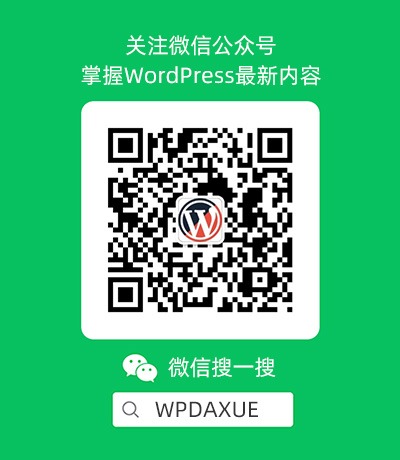WP REST API (WP API) 是一个WordPress插件,其用途是为 WordPress 核心添加一个 JSON REST API , 以便于像移动应用之类的应用与 WordPress 进行交互。
WP-API 是可扩展的,并且具有齐备的文档,如果你使用 WP REST API (WP API) ,你很可能会被授权问题所困扰。
WP REST API (WP API) 能让你创建、编辑获取文章(各种WordPress内置的文章类型的文章以及自定义类型的文章)、创建、编辑和获取用户等,因此,它在某些情形下需要认证(授权),比如创建和编辑操作,就绝对需要授权才行,否则,处理申请会被 WordPress 拒绝。
据 WP REST API (WP API) 的认证(授权)文档来看,认证方式有三种:cookie、oauth和简单认证。本文记录如何实现自定义认证。
据WordPress 官方开发记录显示:这个插件很可能会在2015年4月22日发布的 WordPress 4.2 版本中加入到WordPress核心,那样的话,授权方式可能会有所改变,但不会大变。
举个简单的例子: 某个用户通过手机拍了一张照片,想上传到某个启用了WP REST API (WP API) 的 WordPress 网站,那么,就需要认证了吧,那么,怎么做呢?
下面将说一种用于此种情形的认证方式。
用自定义 filter hook
在该插件目录 lib 下有个类文件 class-wp-json-server.php ,其中有这段儿:
/**
* Check the authentication headers if supplied
*
* @return WP_Error|null WP_Error indicates unsuccessful login, null indicates successful or no authentication provided
*/
public function check_authentication() {
/**
* Pass an authentication error to the API
*
* This is used to pass a {@see WP_Error} from an authentication method
* back to the API.
*
* Authentication methods should check first if they're being used, as
* multiple authentication methods can be enabled on a site (cookies,
* HTTP basic auth, OAuth). If the authentication method hooked in is
* not actually being attempted, null should be returned to indicate
* another authentication method should check instead. Similarly,
* callbacks should ensure the value is `null` before checking for
* errors.
*
* A {@see WP_Error} instance can be returned if an error occurs, and
* this should match the format used by API methods internally (that is,
* the `status` data should be used). A callback can return `true` to
* indicate that the authentication method was used, and it succeeded.
*
* @param WP_Error|null|boolean WP_Error if authentication error, null if authentication method wasn't used, true if authentication succeeded
*/
return apply_filters( 'json_authentication_errors', null );
}
基于上面的这个函数以及其被调用位置,我们可以加进去一个hook,以确认认证是否成功:
/**
* WP JSON API 认证检查
* @param null
* @return boolean 是否认证成功
* @author suifengtec coolwp.com
*/
function coolwp_rest_api_auth_check( $result ){
if(
!isset($_GET['id'])
// ||!isset($_GET['app_key'])
||!isset($_GET['app_token'])
||empty($_GET['id'])
// ||empty($_GET['app_key'])
||empty($_GET['app_token'])
){
return false;
}
//获取从应用GET过来的用户id、app_key和app_token,当然了,你也可以只用一个去app_key和app_token中的任何一个去检查
$user_id = (int)$_GET['id'];
// $app_key = sanitize_text_field($_GET['app_key']);
$app_token = sanitize_text_field($_GET['app_token']);
//查询app_key和app_token,当然了,你也可以自定义一种算法,
//$wp_key = get_user_meta( $user_id, 'app_key', true);
$wp_token = get_user_meta( $user_id, 'app_token', true);
//将从应用客户端获取到的值与数据库存储的值进行对比
if(
( $wp_token == $app_token )
// &&( $wp_key == $app_key )
){
return true;
}
return false;
}
add_filter('json_authentication_errors', 'coolwp_rest_api_auth_check');
结论
加入 rest api 的 WordPress 甚至可以让你做一个在线支付网站,有了这组 api ,基于 WordPress 的原生安卓应用和IOS应用可以更好的与 WordPress 站点进行交互。






文章很不错,很好。
想调用什么直接用json_encode自己封装下就行了,没必要弄个插件。。。
怎样自定义输出特定内容为json格式呢?比如特定链接,特定文字~
系统里面有插件的呀!你可以去下载wordpress官方的wp-json
这个插件很可能会在2015年4月22日发布的 WordPress 4.2 版本中加入到WordPress核心
——这真是个天大的好消息啊
又被推迟了,但是在计划上,这是这个插件比别的强的原因
非常有用,收藏
不错,学习了技术达人 😳
😳
这个插件前段时间一直在折腾,基本上实现了调用文章以及自定义字段,还有自定义文章类型。不过像评论、登录等没有办法实现。当时是想实现Android客户端的,不过谷歌上搜索了很多没有找到类似的开源客户端,没办法实现。这个插件总的说国外应用的比较多,国内的话基本上没有看到过用这个来做什么,当然除了一些公司外。
有办法实现的,不过OAuth太麻烦了,看你要用什么语言实现了:js/php/lua/java/o-c
知道可以实现,不过技术不到家实现不了而已